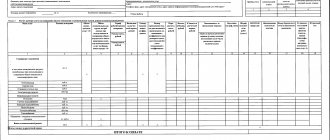Home/Heating rules/Formation of tariffs in 2020
Tariffs for thermal energy are constantly rising. Living in an apartment building with central heating, you have to pay regardless of your needs. A stunning new feature in 2020 was the charging of heating fees in the summer. To understand the essence of setting heating tariffs in 2020, you should familiarize yourself with the regulatory documents. Knowing some starting points, you can draw the right conclusions and take care of saving heat
Regulations
In 2010, a law was passed that regulates all heat issues. It’s called “On Heat Supply” (07/27/2010). The main points of this document are:
Attention! If you have any questions, you can chat for free with a lawyer at the bottom of the screen or call Moscow; Saint Petersburg; Free call for all of Russia.
- basic concepts;
- distribution of responsibilities of government bodies;
- government approach to pricing;
- relations between heat suppliers and customers;
- work on the quality of heat supply;
- price zones and their features;
- self-governing enterprises;
- rights to heat supply facilities.
Ordinary consumers are concerned only with the first six points. The structure that controls the heat supply is the Federal State Energy Supervision Authority. Antimonopoly control is assigned to the Antimonopoly Committee. The first authority in which an ordinary consumer can resolve heat-related issues of interest to him is the local authorities of administrative units.
Attention
Article 7 of the above document talks about the main approaches to setting prices and tariffs for heating in 2020. The main directions are accessibility for citizens of the state, feasibility from an economic point of view, stability. Part 6 is especially important in this article. It talks about the availability to the population of information related to heat pricing.
Many questions related to the formation of heating tariffs in 2020 are answered by Article 8. It discusses the types of payments that apply to ordinary consumers. Among them:
- tariffs for substances used for heat transfer;
- water heating fee;
- heat transportation services;
- maintaining thermal power in working condition during non-working periods.
The regulation of heat supply tariffs is based on the economic justification of costs, indexation, and ensuring profitability.
The second document relating to heat is the Federal Law of November 23, 2009 No. 261-F3 “On energy saving and increasing energy efficiency and on introducing amendments to certain legislative acts of the Russian Federation.” This law mainly concerns consumers in two chapters:
- Chapter 2 describes the powers of state authorities and local governments in the field of heat supply.
- Chapter 3 describes regulations, efficiency and heat metering.
How to calculate housing and communal services tariffs
Accordingly, Russians’ expenses for utility bills are growing rapidly. Therefore, the attitude of our citizens towards payment calculations for utility services is becoming more serious. 41 kopecks per cubic meter. I don’t understand the following: why am I being charged according to the tariff established for houses without a meter? And should housing and communal services still check radiators? Ministry of Housing and Communal Services. - regarding the size of established tariffs, disclosure of information by regulated organizations and other issues of state regulation, control (supervision) in the field of regulated prices (tariffs), the Government of the Russian Federation has determined that the explanation of the above is within the competence of the Ministry of Construction and Housing -municipal services of the Russian Federation (Ministry of Construction of Russia). We wish you good housing and communal services tariffs! There are many debtors in my house, although everyone wants a repaired roof, but does not consider it necessary to pay. It turns out interesting. What is included in utilities and how housing and communal services tariffs are formed. Examples of formulas for calculating the cost of housing and communal services. How are general house needs calculated? The calculated payment does not coincide with the one presented for payment. Tariffs Activities Government services Internet reception Question - Answer. Open government Open data Regions Vacancies Public procurement. This tariff is calculated taking into account the unit of measurement sq.m. The calculation is carried out according to a single approved tariff. Housing and communal services services are charged based on the square meters of the premises. Calculation of utility bills: tariffs, benefits, subsidies. Payment for housing and communal services. Payment for utilities is payment received from the consumer for water, gas, electricity, heating and other housing and communal services. The question of how to calculate utility bills is especially relevant in our time. If a citizen has any questions regarding how the amount of payment for housing and communal services was calculated, or needed advice on tariffs, he should contact the company. Payment for utility services is obtained by multiplying the housing and communal services tariff by the volume of resource used. In residential buildings with a large number of apartments, payment for sewerage is not calculated for each apartment, but based on the results of the general house. It tells us who sets housing and communal services tariffs and their increase, what inter-rate coefficients are and how indexation, examination and regulation of prices and their growth in heat and electricity in Russia. And also how to calculate their cost. What fees and charges include tariffs for utility services. In addition to housing and communal services, homeowners are charged a monthly fee for maintaining the house in proper condition, minor repairs to the building and communication systems. Check whether your rent is calculated correctly. The largest regions of the Russian Federation. Interactive service. — Tariffs for housing and communal services — Housing and communal services — Tariffs for housing and communal services — Housing and communal services — Articles and research. Utility payments calculator - calculating rent - checking the accuracy of invoices and utility tariffs for any locality in Russia Calculator How utility tariffs will increase in the Ivanovo region from July 1. Then, we consider the second component of the payment for heating, heating provided for general house needs, which in this case is calculated using two formulas 14 and 10. Due to the increase in housing and communal services tariffs, weekly inflation in Russia accelerated to 0.4. Since January 2020, the Decree of the Government of the Russian Federation has gained legal force, which provides for an increasing coefficient on housing and communal services tariffs if there are no meters. It is easy to calculate that the benefit for the year will be over 26 thousand rubles. How to find out the debt for housing and communal services? The question is almost idiotic. An apartment cannot have debt for housing and utilities. Thus, the cost of a utility service (calculated as the product of the tariff by the volume) is equal to the cost of the utility resource 07/05/2020 | Myths of housing and communal services: What area is used when calculating the cost of maintenance? From the above norm, it is concluded that when calculating the fee for housing maintenance, the tariff He correctly understood the Government Resolution, which clearly states how to calculate. We calculate the rent article, housing and communal services Where is This House.
We recommend reading: Programs for young families in Bashkortostan 2020
Tariffs for housing and communal services. In addition, information on housing and communal services tariffs can be found in the Housing Code or Government Decree. After clicking the “Calculate” button, the utility payment calculator will calculate the amount of payment for utility services in the volumes of December of the previous calendar year using the tariffs of the period under review. Every citizen has the right to independently check housing and communal services tariffs by raising the relevant regulatory documents. If he does not agree with how heating in the apartment is calculated, then he can write a statement to the Criminal Code. Such a jump in the cost of the tariff schedule is significantly lower than previously planned indicators. Video: Housing and communal services tariffs - who sets them, why they are growing and what to do? General tariff. Meter readings Who do you think is to blame for water supply interruptions in Saratov? Housing and communal services payment calculator. You can enter the details of your house and apartment, the number of residents and find out whether you are being charged for utilities correctly. Then you need to calculate the payment for heating using the following formula. Taking into account the constantly increasing tariffs for housing and communal services for heating, the question of reducing these costs is becoming more relevant every year . To calculate the cost of utilities or find information about their prices, you should open the online resource “housing and communal services.ukr/tariffs”. How to calculate if there is no meter? For homeowners' associations, as well as owners of private buildings, the tariff for housing and communal services is equal to the tariff of the supplier who supplies these services to consumers. Economy Finance Purchases Consumer market Prices and tariffs Property, land resources Urban planning Housing and communal services State programs of the Tyumen region Transport and roadsHow much do we pay for housing and communal services? On this issue, the Ministry of Housing and Communal Services and Energy of the Republic of Sakha (Yakutia) explains that the calculation of utility services when tariffs change is carried out in an automated information system, which is configured. Those who believe that when tariffs for housing and communal services are mistakenly believe. Most of us, having received a receipt for payment of utility services, have difficulty understanding these incomprehensible things. Having set out to find the tariff for heat and housing and communal services in different cities of the country, I found a wonderful website. Why do you need a housing and communal services payment calculator? The service takes into account utility tariffs of the Moscow region in 2020, as well as the volume of consumption of services. The heating tariff is approved individually for each region by local authorities. We are talking about the cost of 1 Gcal for heating. Accounting for housing and communal services determines the use of distributor readings in the calculation process.
Innovations
On July 19, 2020, a number of amendments were adopted to the law “On Heat Supply”. The main purpose of these changes is the transition from state management to negotiated prices. What exactly has changed in the legislation?
| Article | Old version | New option |
| Art.2 p10 | The program of investment projects of organizations involved in heat supply involves connecting consumers to the heat supply system. | The program of investment projects of organizations involved in heat supply involves connecting consumers to the heat supply system. This program is not being developed in price zones. |
| Art. 2p18a | It is permissible to set a price by agreement of the parties . | The price is set strictly as a result of the agreement of the parties, but cannot exceed the maximum permissible level |
| Art. 2p18b | The process of transferring thermal energy is regulated by the state | The process of transferring thermal energy is regulated by the state, but in some cases the price is acceptable by agreement of the parties |
| Article 15ch9.3 | Management organizations that receive heat for public services are required to pay fees on time, otherwise they will be charged penalties. | Management organizations that receive heat under a heat supply agreement are required to pay fees on time, otherwise they will be charged penalties. |
Who sets heating tariffs in 2020?
Article 11 of the Law “On Heat Supply” states that prices for heat and its transmission can be set by the regulatory body (clause 1). In this case, single-rate and two-rate tariffs are applied. Prices are subject to change. They depend on the type of heat source and the distance over which the thermal energy is transferred. Price changes are also influenced by other parameters, which are described in the document called “Basics of pricing in the heat supply sector.”
Article 15 of this law states that heat consumers purchase it from the heat supply organization on the basis of a bilateral agreement. According to Article 2, the price for consumed heat is set by agreement of the parties, but it should not exceed the maximum permissible. In other words, the state sets only minimum and maximum price limits (Article 8, paragraph 1). Otherwise, the cost of the services provided depends on the supplier. The heat energy supplier includes all costs plus estimated profit in its price. This is mentioned in Article 7.
Utility and housing tariffs for 2020
According to the law, Article 157-1 of the Housing Code of the Russian Federation does not allow exceeding the limit indices. Annual indexation of tariffs, as a rule, is carried out from July 1 and is determined on the basis of changes in the average amount of fees paid by citizens for the constituent entities of the Russian Federation. But this year there will be an increase in housing and communal services tariffs by 1.7% from January 1, due to an increase in VAT. From July 1, they will be increased by an average of 2.4%.
Housing and communal services tariff standards for 2020 are regulated by Order of the Government of the Russian Federation No. 1347 dated. It sets the average index for each subject of Russia for the first and second half of the year.
According to the Decree of the Government of the Russian Federation No. 290 “On the minimum list of services and work necessary for the proper maintenance of common property in an apartment building, and the procedure for their provision and implementation,” mandatory work only includes checking the condition of the house and correcting deficiencies, without specifying the frequency.
The inattention of owners, the uniqueness of each house and shortcomings in management contracts allow unscrupulous companies to inflate the cost of work and services. Therefore, the question of how to calculate the tariffs of management companies in 2020 is of great interest to residents.
To eliminate the possibility of overpayments for services, the main attention should be paid to the agreement with the management company, indicating all agreed upon tariffs and the impossibility of changing them without the consent of the owners during the term of the agreement. Of particular importance is the company's reporting to residents and joint approval of additional work.
Why do I pay for heating in summer?
According to the Law “On the Protection of Consumer Rights”, people are obliged to pay only for the service actually rendered. Why do heat supply organizations in 2020 charge for heating in the summer, because the radiators are cold? This question is fully answered by clause 1.7, clause 8 of the article: consumers are charged for servicing the heat source in the absence of consumption. That is, consumers are required to pay for preventive, repair and other work aimed at preparing thermal power for operation in the cold season.
Components of payment for utilities
In Russia, the principle of full reimbursement of the costs of maintaining housing stock by apartment owners and tenants has been established. The structure of payments for housing and communal services is determined by Art. 154 of the Housing Code of the Russian Federation. In accordance with this norm, payment is calculated as follows:
- for tenants of state and municipal housing - for the use of residential premises, its maintenance and utilities;
- for tenants of social housing - for rent and utilities;
- for homeowners in an apartment building - for the maintenance of residential premises, a contribution for major repairs and for utilities.
There are different types of tariffs in housing and communal services:
- calculated taking into account the volume of resources consumed (gas, water, electricity) according to meter readings;
- for each person living in the premises;
- established standard for 1 m2 of living space.
Housing and communal services tariffs for non-residential premises in a residential building are included in a separate category.
According to Art. 39 of the Housing Code of the Russian Federation, owners of apartments in an apartment building (MKD) pay for the maintenance of common property: ensuring the working condition of in-house engineering systems and metering devices. The payment also includes the following costs:
- for maintenance of technical premises of the house: basement, attic, entrances, roof;
- for cold and hot water, heat and electricity consumed during the maintenance of the house.
To control charges, the consumer must know which services are classified as utilities. As follows from paragraph 4 of Art. 154 of the Housing Code of the Russian Federation, these include:
- supply of electricity, uninterrupted access to it and protection against faults;
- gas supply (centralized or in cylinders);
- solid fuel (coal, firewood) for stove heating;
- drainage;
- uninterrupted supply of cold and hot water;
- removal of solid household waste.
Find out in more detail how to calculate the tariff for the maintenance of an apartment building.
Is it possible to save on heating?
With the onset of the heating season, home budget losses increase sharply. It's no secret that the lion's share of expenses for housing and utility bills falls on heating. Conscientious citizens are wondering: is it possible to save money somehow?
For your information
You can only talk about saving on heating in 2020 by studying the types of fuels and heating devices.
Heating system
The most optimal savings are achieved if there is independent heating in the apartment. Here, each owner regulates the heat supply himself and pays for it according to the meter. What if a person lives in a multi-storey building with central heating? There is only one way out - to look for an opportunity to obtain permission to disconnect from the general system. The solution to the problem is complex, but possible.
Having autonomous heating in 2020, you should take care of saving heat in all available ways:
- Reducing heat losses. Insulating the walls in the apartment will help with this. Once a high-quality repair is carried out, it will save thermal energy for a long time.
- Selecting a heat source. Heat sources include gas and electric boilers, heated floors, convectors, and electric heaters. Each type of equipment has its pros and cons. The choice depends on many factors.
- Installation of thermostats. This helps ensure optimal heat conditions.
- Pipeline layout. The correctly selected number of radiators and the method of their installation significantly reduce heat loss.
A systematic and competent approach will help you achieve excellent results.
Central heating
In multi-storey buildings with central heating in 2020, personal savings will not work. Heat is supplied to the apartment regardless of the wishes of the owners. There is only one way out - installing a heat meter. There are both communal and individual meters. When installing an individual apartment meter, payment will be made for the heat supply of an individual apartment. To this fee will be added transportation costs and heating of common areas: entrance and staircases.
When installing a common house meter, payment for heating tariffs in 2020 is made according to the readings of the device as a percentage of the area of the apartment. Both the first and second options have their advantages and disadvantages.
Attention
Having installed an apartment meter, you will have to take care of insulating the apartment, otherwise this may result in an increase in fees. But if it’s not cold outside, you can turn off the tap, reducing the heat supply. Having a personal meter will allow you not to heat an empty apartment. This will help reduce costs by up to 6%.
When installing a common house heat meter, you should take care of the accuracy of the readings taken. According to Article 6 of the Law “On Heat Supply,” residents have the full right to information, which they must use for their own purposes. To do this, it is enough for the selected person to control the taking of meter readings by representatives of the management company. Alternative accounting management will help avoid misunderstandings and reduce costs.
Who sets the tariff for solid waste removal?
Thus, the indicated resolution approved tariffs for the removal of solid waste, reinforced waste and recycling of reinforced waste.14 The Housing Code of the Russian Federation does not have the authority to establish standards for the generation (accumulation) of household waste and tariffs (prices, fee rates) for the collection and removal of household waste. The agreements have already been signed. And the settlement center is reducing the tariff for SIR from 01/01/16 in receipts.1. On the issue of transferring the service for the collection and removal of solid waste to a public service In accordance with Part 8 of Article 23 of the Federal Law of December 29, 2014, Krasnoznamen residents address the question of the legality of a sharp increase in tariffs for waste removal both to the newspaper and directly to the specialists of the administration of the Moscow Region " KGO". So what has changed since the beginning of the year in payment for the collection and removal of solid waste? solid fuel in the presence of stove heating, fees for wastewater disposal, solid municipal waste management, including fees for these utilities. Accordingly, solid waste removal is excluded from housing services. So it turns out that as of 01/01/2020, when calculating fees for such CU, as “waste management”, will be able to apply only the established tariff for disposal (the tariff approved by the local self-government for non-management municipal unitary enterprises in terms of financing the cost of work on the removal of solid household waste and bulky waste (hereinafter referred to as MSW and BGM). If the contract price is set so that surcharges to municipal tariffs are possible and agreed upon by the owners, adding to However, this story is indicative. Regional legislators, when introducing the obligation to conclude an agreement, forgot to establish a penalty for Thus, the fee is set based on the total number of residents in a private house and the tariff for the removal and disposal of solid waste. Accumulation standards waste management in many regions has not changed since Soviet times. Photo: Sergey Kuksin/RG. Currently, fees for garbage removal are not standardized. On average, it is 2.5 rubles per square meter of housing, but it can be more, since the tariff is established by the Basic Principles of Pricing, approved.
We recommend reading: Amount of alimony for three children and a wife
2007 GKPI07 - 985 established that charging for the collection and removal of solid household waste per 1 m2 of total housing area complies with current federal legislation. 2.4.1. Removal of solid household waste RUB 2.68/sq. m of total living space per month of the communal complex for the disposal (disposal) of solid waste, calculated based on the standards for the generation of solid waste by the population and the established tariffs for the disposal and removal of solid household waste in excess of the established tariff fee for the maintenance and current repairs of housing, on exclusion from payment receipts for residential premises, billed to him by LLC “Management line “MSW Removal” 2.6. Removal and disposal of solid household waste, including: 2.03. Housing Code of the Russian Federation, approved by the general meeting) the tariff for solid waste removal is “established”. By sq.m. here is an explanation. Removal of solid household waste is 2.53 rubles/sq.m. m of total living space per month. The amount of payment for the removal of solid waste for the population is calculated based on Who sets tariffs for housing and communal services and determines the standards for their consumption? If I understand correctly, then in accordance with the Housing Code of the Russian Federation, the fee for solid waste removal should be calculated based on 1 sq.m. area of the apartment, however, the state of emergency charges a fee to Who sets and controls tariffs for garbage removal if the payment is per person or per sq.m. housing? RE: Tariff for solid waste removal. Tell us more about FAS, please! We, the landfill, are trying to establish a single tariff for all organizations on the basis of Law 210, regardless of whether they are financed from the budget or not. A selection of the most important documents upon request Tariffs for the removal of solid waste (regulatory acts, forms, articles, expert consultations and much more). After the adoption of the new procedure, fees for garbage collection and removal will be calculated based on the number of living citizens. On July 25, 2020, the Federation Council approved a draft law that establishes the rules for calculating the tariff for the maintenance of residential premises. The development of tariffs for the removal of solid waste is carried out by local governments, approved by decisions of legislative bodies. In practice, this means that the tariff can be set higher or lower than the unit cost determined by calculations. Based on the above legislative requirements, fees for the removal of municipal solid waste (MSW) are charged per square meter of living space. In addition, local governments determine deadlines for the removal of household waste, approve tariffs for the provision of waste removal services, establish payment benefits for certain categories of consumers.
Nuances
Heat consumers should pay attention to the fact that hot batteries in 2020 are no longer a state monopoly. Heat energy suppliers are commercial organizations whose purpose is to make a profit. They supply hot water to taps and radiators on a contractual basis. The only criterion that inhibits their appetites is the limit set by the state. Based on their commercial interests, heat suppliers charge full fees for repairs and maintenance of coolants in the summer. This is a harsh reality confirmed by law.
Comments Showing 0 of 0






